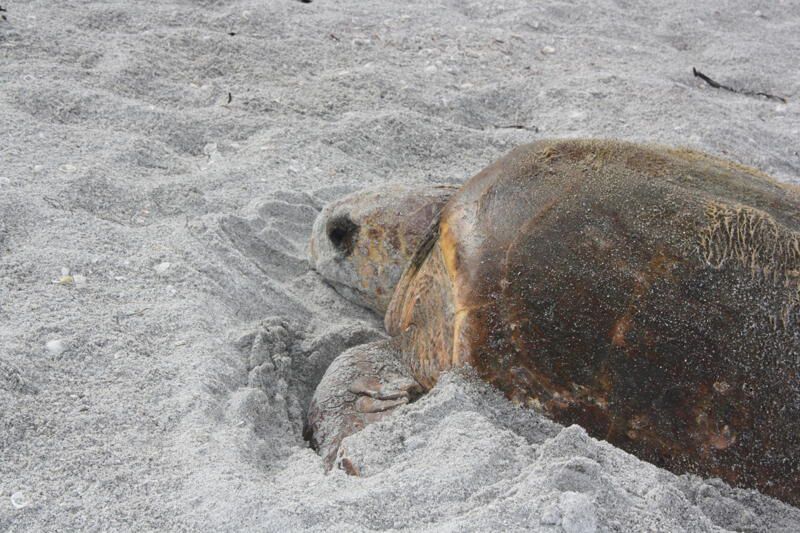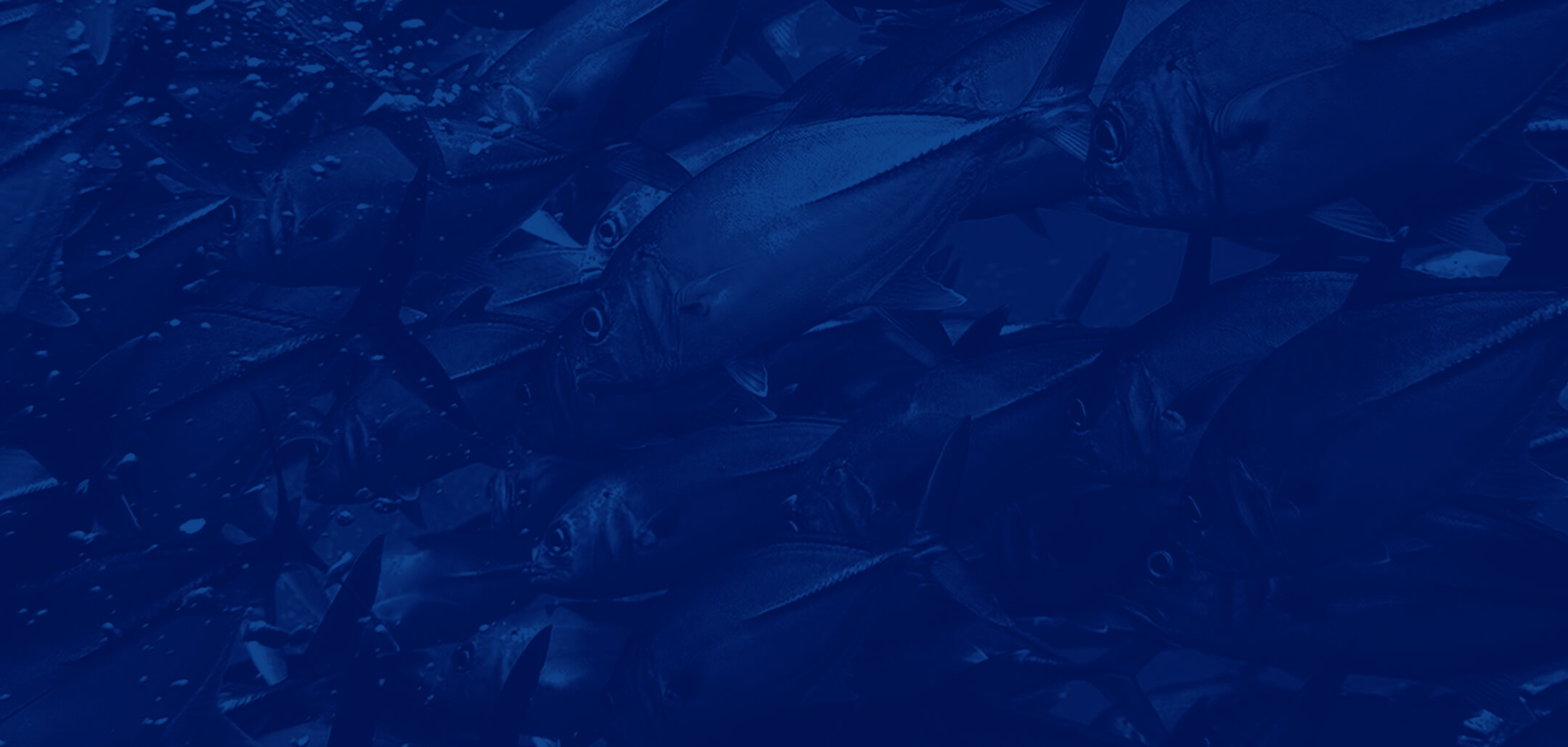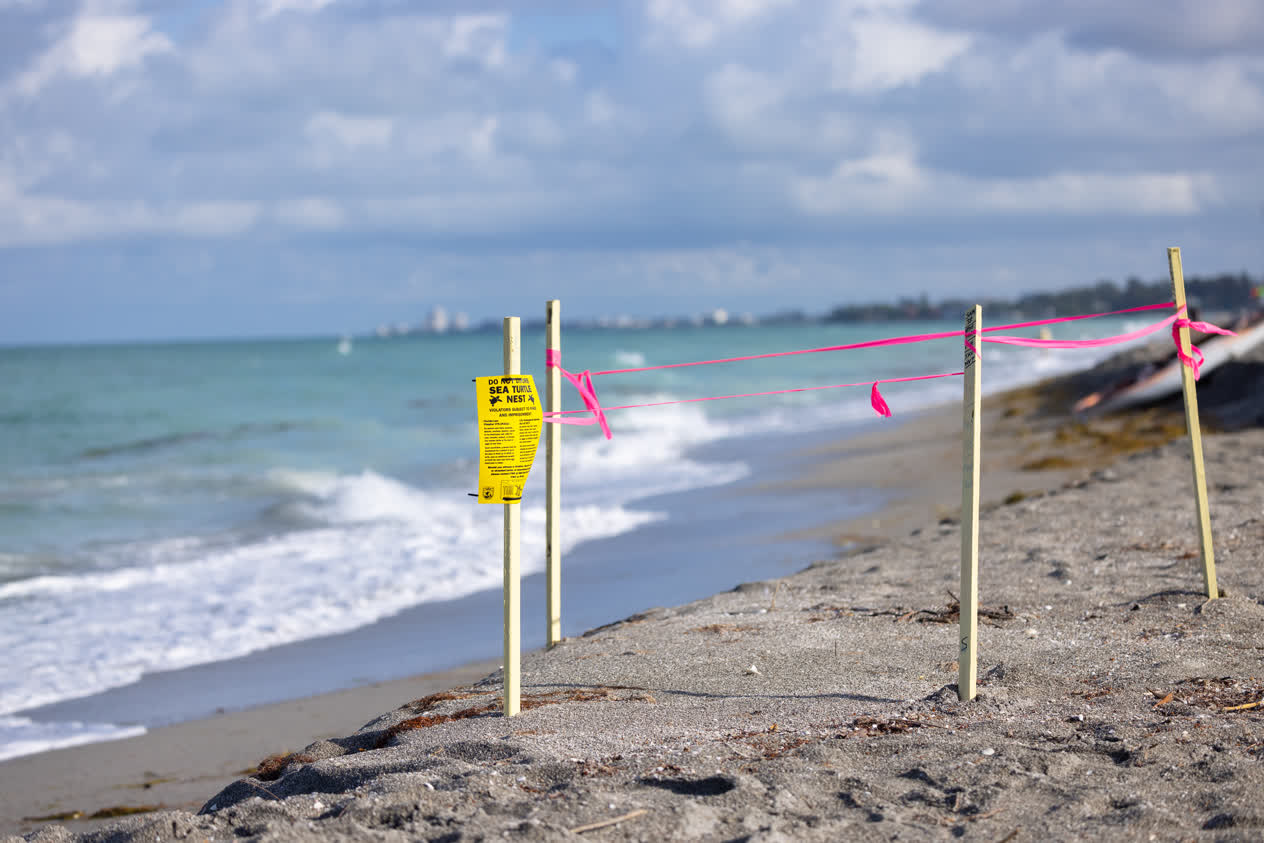Protect Turtles
Sea turtles are protected under the Endangered Species Act of 1972 and the Florida Fish and Wildlife Conservation Commission (FWC) has further protections in place.
In southwest Florida, sea turtle nesting season is from May 1–October 31, but turtles can begin nesting (laying eggs) on local beaches as early as mid-April. Sea turtles also need year-round protection from boat strikes and other threats at sea.
- Get turtle-protection tips:
ON THE BEACH WHILE BOATING
- Report stranded sea turtles and marine mammals in Sarasota and Manatee counties to Mote at 888-345-2335. Outside this area please call the FWC Wildlife Alert hotline at 1-888-404-FWCC (3922).
- Read our FAQ for more turtle tips
- Learn how to support sea turtles!
Lighting Resources
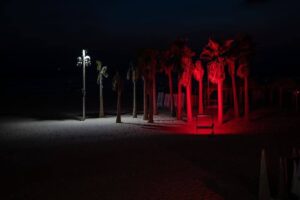 Sea turtle disorientations occur when artificial lighting from homes, street lights or other human sources cause a nesting female or newly emerged hatchlings to incorrectly orient themselves and travel inland/away from the water. Disoriented turtles are less likely to reach the ocean, which puts them at risk of predation or exhaustion. Mote’s Sea Turtle Conservation & Research Program is studying how light affects the nesting females and hatchlings in our region.
Sea turtle disorientations occur when artificial lighting from homes, street lights or other human sources cause a nesting female or newly emerged hatchlings to incorrectly orient themselves and travel inland/away from the water. Disoriented turtles are less likely to reach the ocean, which puts them at risk of predation or exhaustion. Mote’s Sea Turtle Conservation & Research Program is studying how light affects the nesting females and hatchlings in our region.
We encourage the public to reduce the effect of artificial lighting during nesting season.
SEA TURTLE LIGHTING GUIDELINES (FWC)
Other lighting resources: Dark Sky International educates the public about reducing the harmful effects of light pollution. Sea Turtle Conservancy works on reducing artificial light visible from the beach to protect sea turtles.
Mote works closely with local cities, counties and towns (municipalities) to help identify areas where disorientations are occurring, but as a non-government organization, Mote does not enforce marine turtle protection ordinances. These ordinances are executed by and vary by municipality. For specific questions about the local code impacting you, talk to your municipality.
Support Turtles
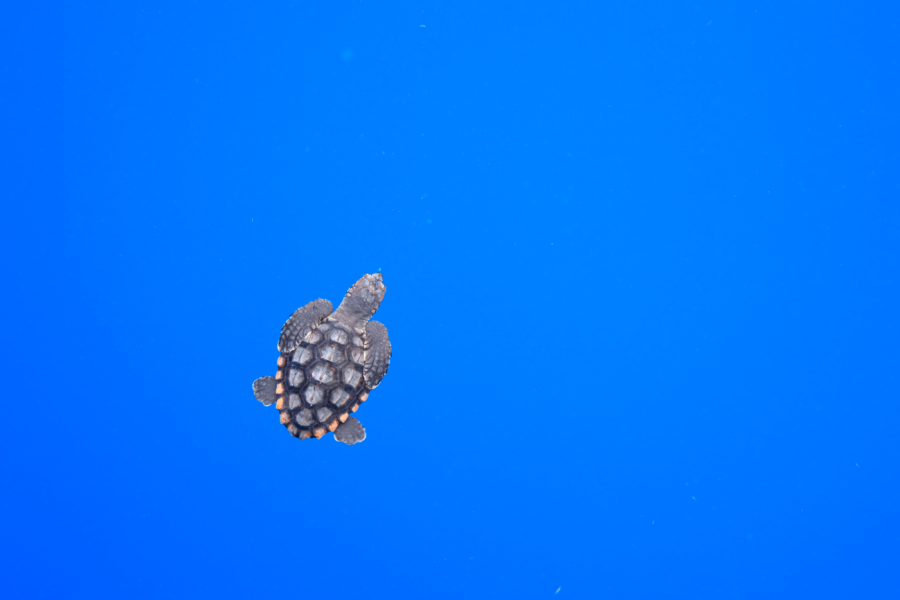
Mote scientists are seeking donations of supplies and funding for our next busy season of Sea Turtle Patrol and our ongoing research and conservation.
Run for the Turtles
Annually, Mote’s Run for the Turtles invites the public to “run, walk or crawl” in our 5K race and 1-mile fun run/walk that help us raise funds for endangered and threatened sea turtles. Whether you join virtually or in-person you’re turtle-y awesome!
The Run is usually held in April at Siesta Beach, Florida. Check for updates:
Donate or Adopt
To make a donation, visit mote.org/donate, click “Donations” and choose to donate to Mote’s operating fund. During the checkout, enter “Sea Turtle Conservation and Research” in the box marked “donor notes.”
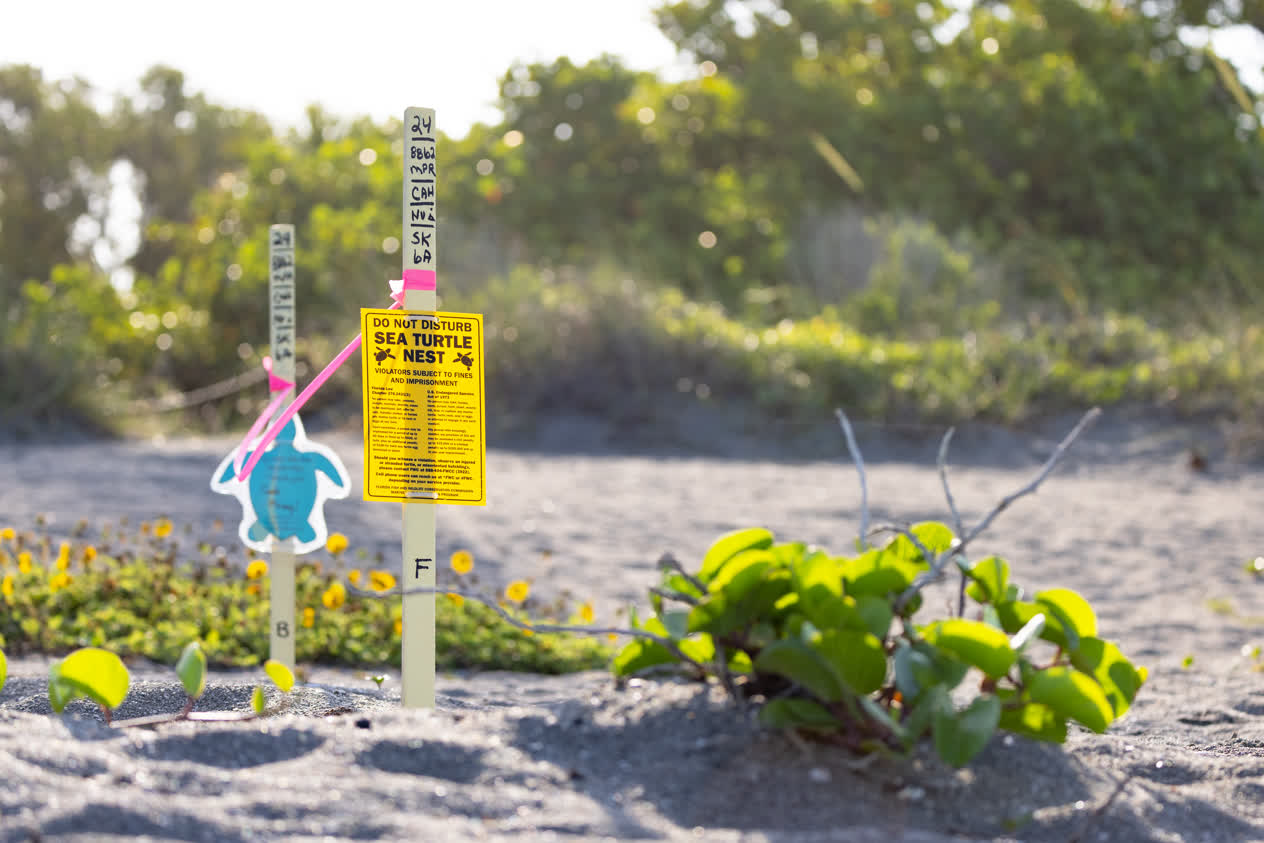
For a fun way to give, you can adopt a nest! Your adoption helps Mote’s Sea Turtle Conservation & Research Program monitor sea turtle activity to learn about their biology and behavior with the goal to reduce human impacts on these endangered and threatened species.
When we satellite tag a turtle to track her migrations, you can help us name her! These donations help maintain the tag over the course of the year for satellite time. Learn more here.
Frequently Asked Questions (FAQ)
Be quiet and still. Remain behind the turtle at a distance. Do not touch or approach her. Let your eyes adjust to the dark, do not shine any lights on her, and do not take flash photos – this could confuse the turtle and stop her from laying eggs. Nesting females stay still during most of the process, which may last up to one to two hours. Do not block the turtle’s path back to the ocean. Do not mark the area. STCRP staff will document the new activity after dawn.
- …but no eggs are exposed? Nests can tolerate some water inundation. If no eggs are exposed, no action is required. Moving eggs that have been incubating for more than 12 hours might cause more harm to the embryos than water exposure would.
- … and eggs are exposed? Write down or photograph the information on one of the nest stakes and then contact STCRP. Don’t touch the eggs. STCRP will determine what action to take (if any).
If you are sure it’s a sea turtle, take photos (no flash) and call STCRP immediately so we can identify the species. Rare Kemp’s ridley turtles nest during the day, but it’s more likely to be our more common loggerhead.
Hatchlings heading towards the ocean should be left alone. If hatchlings are injured, not on the beach, or headed away from the ocean call Mote’s Sea Turtle Conservation & Research Program (STCRP). Please note, no one is on call from 16:00-04:00 but instructions for hatchling drop off are included in our voicemail greeting.Mote STCRP: (941) 388-4331
Call Mote’s Stranding Investigations Program: (888) 345-2335
Contact Law Enforcement:
- FWC Law Enforcement: (888)404-3922
- Town of Longboat Key Police Department: (941) 316-1977
- City of Sarasota Police Department (Lido): (941) 316-1199
- Sarasota County Sheriff’s Office (Siesta and Casey Key): (941) 316-1201
- City of Venice Police Department: (941) 486-2444
- Head over to FWC’s webpage to see their recommendations
- Longboat Key Turtle Watch hosts turtle walks every Saturday morning in June and July. These walks are free to the public and offer a unique opportunity to learn about the sea turtle life cycle and our local beaches. More information can be found on LBKTW’s webpage.
Check out the many ways you can support our program above.

